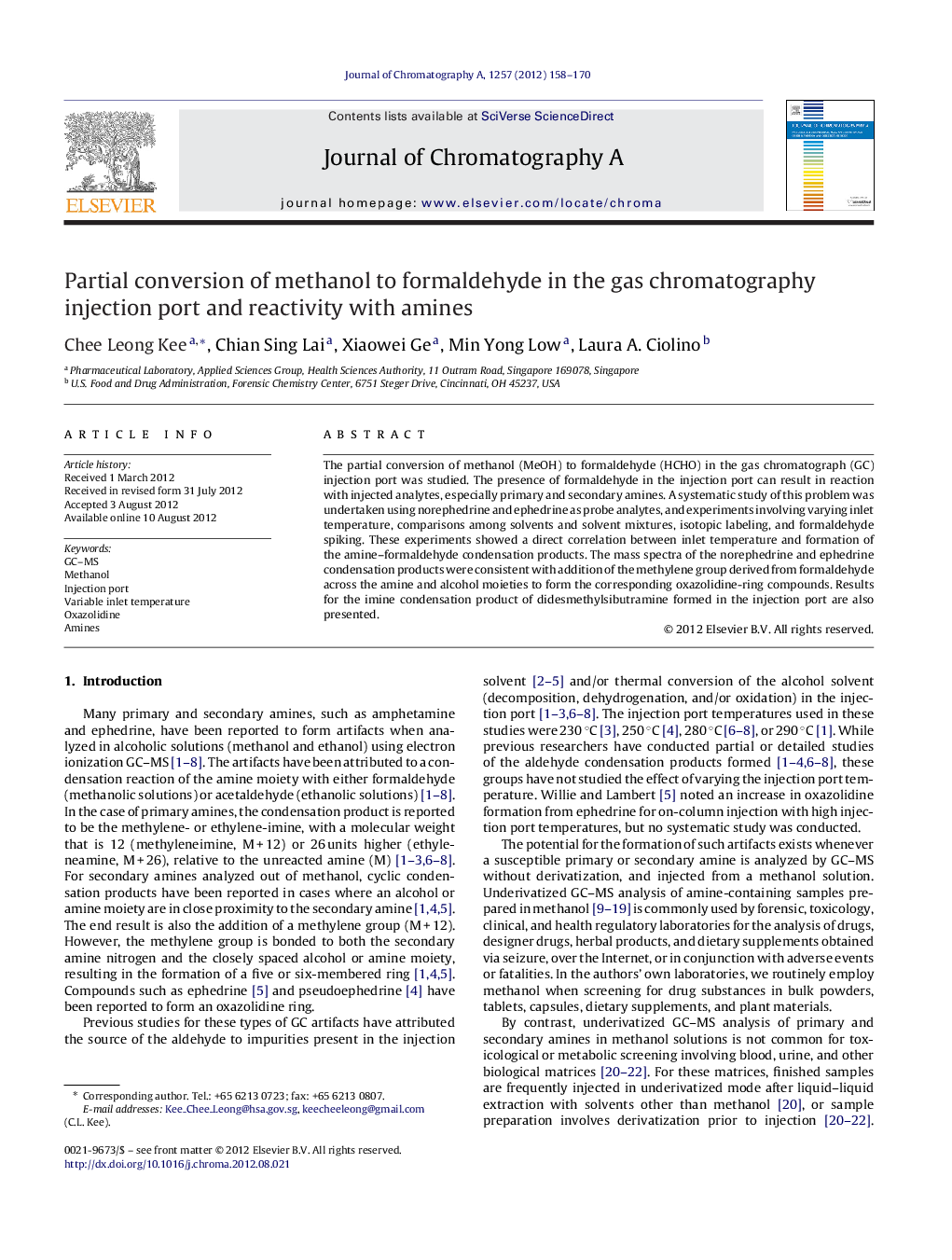| Article ID | Journal | Published Year | Pages | File Type |
|---|---|---|---|---|
| 1202023 | Journal of Chromatography A | 2012 | 13 Pages |
The partial conversion of methanol (MeOH) to formaldehyde (HCHO) in the gas chromatograph (GC) injection port was studied. The presence of formaldehyde in the injection port can result in reaction with injected analytes, especially primary and secondary amines. A systematic study of this problem was undertaken using norephedrine and ephedrine as probe analytes, and experiments involving varying inlet temperature, comparisons among solvents and solvent mixtures, isotopic labeling, and formaldehyde spiking. These experiments showed a direct correlation between inlet temperature and formation of the amine–formaldehyde condensation products. The mass spectra of the norephedrine and ephedrine condensation products were consistent with addition of the methylene group derived from formaldehyde across the amine and alcohol moieties to form the corresponding oxazolidine-ring compounds. Results for the imine condensation product of didesmethylsibutramine formed in the injection port are also presented.
► Partial oxidation of methanol in gas chromatograph (GC) is studied. ► High inlet temperature is a critical factor for the oxidation of methanol. ► Formaldehyde reacts with amines to form imines and oxazolidines. ► Artifacts in the chromatogram may pose difficulty in compound identification.
